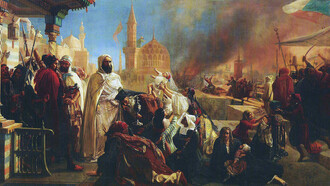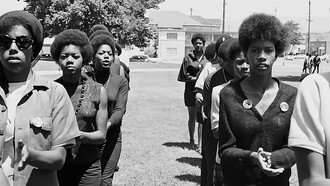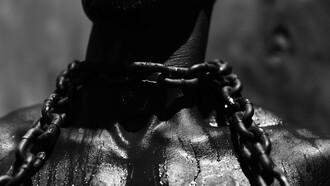At the very outset, the reader is informed that this article employs the critical tool of feminism(s) as well as Louis Althusser’s theory of ideology to meaningfully negotiate the problems concerning women’s identity formation in Puranic Indian Literature and Bhakti movement. The term that seems to be relevant for such kinds of exercise is what Elaine Showalter has called ‘gynocritics’. 'Gynocritic' in contrast to ‘androcentric’ seeks to chart a distinctive 'female literary tradition’. Showalter, in her book A Literature of Their Own (1977) claims that women’s writings are profoundly different from men’s writing because women write from their unique female life experiences. In her essay Towards a Feminist Poetics (1979) she puts forward her notion of ‘gynocriticism,’ which is the historical study of texts by women that privileges their feminine experience. There is a range of Feminist scholars whose works can be seen as an antecedent or continuation on similar lines. Feminist writers like Virginia Woolf in her A room of one’s own (1929) has put forward a similar view. Genevieve Llyod’s Man of Reason which reveals coercive binary in treatises of philosophy and Standpoint Theory by Sandra Harding falls into this category.
The purpose of this article is not solely to undertake a 'gynocritic' survey with an objective to construct a distinctive ‘female literary tradition,’ but also to deconstruct the ideology of Puranic Tradition via writing of women during this period.
But why choose Medieval Indian Bhakti tradition to talk about the female experience?
For the simple reason that therein lies the roots of feminism in India. Women’s writings during the Bhakti movement are characterised by sheer bravery, tenacity and their devotion to Personal God. They created a room of their own and refused to be bound by societal norms. They did what was not sanctioned, and displayed the true strength of a woman’s spirit. They created their own path to freedom, and inspired many others to follow their own will. They transcended the social identities and breached material realities into a universal spiritual realm.
The Bhakti movement encouraged expression of all forms, as a result we have a vast area of information about women’s writings and their experiences. When we take a stroll through the works of women in the Bhakti movement, one can notice that they exploited the religious emotion to deal with patriarchy and created an alternative space for themselves. Mira Bai, a celebrated Lord Krishna’s devotee married into a royal family. When she got married and came to her in-law’s family, she was accused of not behaving properly, like that of a royal woman.
I have lost the honour of the royal family.
People say I have gone astray with the sadhus.
I constantly rise up and go to God's temple,
and dance snapping my fingers.
I don’t follow the norms.
As an oldest daughter in law, I have thrown away the veil.1(Mira Bai)
Her family tries to restrict her movements and they even lock her in.
O friend cannot live without the delight giver.
Mother in law fights, my sister in law teases.
The Rana remains angry.
They have a watchman sitting at the door,
and a lock fastened on it.
Why should I give up my first love?
My only love Mira's God is the lifter of mountains.
O nothing else pleases me.(Mira Bai)
Their ideas eventually posed a challenge to the patriarchal structures and the mortal man to whom they were tied in a nuptial bond. The woman bhaktas extended the definition of love to God in terms of a lover, a wife, a mistress, a friend and servant.
Akka Mahadevi’s writing speaks of a total disdain for the earthly husband, much in contrast to what she has been taught by the scriptures and told by tradition, because the earthly husband decays and dies.
I love this handsome one.
He has no death decay or form.
No place or side, no end nor birthmark.
I love him O mother listen.
So the lord white as jasmine is my husband.
Take these husbands who die and decay.
And feed them to your kitchen fires.(Akka Mahadevi)
She now has no other ambition except to join her lord.
O Shiva.
When shall I crush you on my pitcher breasts.
O lord white as jasmine, when do I join you.
Stripped of body's shame.
And my heart’s modesty?2
Undying devotion which gives these women the moral courage to stand against patriarchal political authority and create an alternative space for themselves was not achieved without consequence.
One has to bear lightning, flashes and thunderbolts.
One has to put up with pitch darkness at midday.(Lal Ded)
Throughout chronological history, women have negotiated many layers and levels of existence working out various forms of resistance through various mediums which have not been spotlighted enough. But the Bhakti movement was one medium which was accessible to women. Since religious space was open to them in mediaeval times, many woman bhaktas embraced Bhakti and it became a tool to express their own truths in voices that reformed society, polity, relationships and religion. The Bhakti movement came across as a sanctioned space for ecstasy where all the existing rules and orders of society could be transcended.
Perhaps, this is the reason why they tore through the realm of the past and have gained coin in popular culture of the contemporary age. Owing to the lack of historicity of information about them, one must turn to the collective memories and remembrance which are based on their bhajan (spiritual songs) and poems. It is from these that we can get glimpses of the lives of these women.
A historical awareness about the ways in which women and Dharmic religion in India have engaged should be at the forefront of Indian consciousness. This becomes particularly important in the globalised world, wherein the secular credential of India is labelled inefficient based on a Eurocentric notion about secession of state and religion. India’s theological trajectory doesn’t necessarily mean chaotic reign of ‘Kingdom of God’ and neither has it ever guaranteed plainly the secular stability of court.
What explains the hierarchical inflexibility during Bhakti tradition?
The rise of Puranic tradition during the medieval age was an ingeniously crafted narrative, which in the light of other competing religions (Buddhism, Jainism, Islam), constructed a mechanism that was pluralistic enough to accommodate deviance and yet had a caste into which each individual or group fits as per desired discourse. It provided an escape into its vast pluralistic worldview which can often be read as a mechanism to funnel deviance without leading to a state of rapture. The ingenuity of Puranic narrative lies in its ability to incorporate masses and not only the conventional guards as was the case during the Vedic Period.
Notes
1 Chaturvedi, Parshuram,1983, Mira Bai ki Padavalli, Hindi Sahitya Sammelan, Allahabad.
1 Zydenbos, Robert, 1989, Translation of Akka Mahadevi The Women Bhaktas, Manushi New Delhi.















